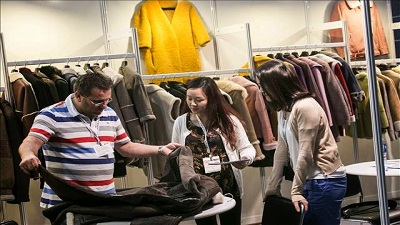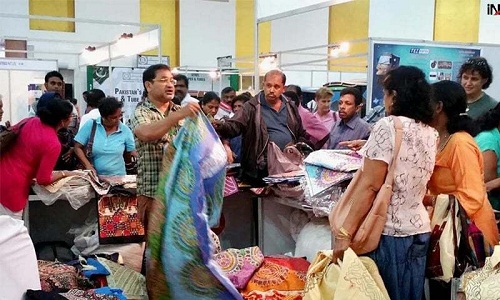
Ethiopia is fast emerging a strong destination for sourcing apparel. The country’s clothing and garment sector is undergoing rapid expansion fuelled by foreign investment as companies seek to reduce their reliance on countries like China and Bangladesh.
Ethiopia grows some of the world’s finest cotton and has a rich textile spinning and weaving history, yet its importance on a global scale remains insignificant as of now. With several government incentives, and priority given towards developing the textile and clothing industry across the value chain, a viable business environment and duty free market access to both US and EU, Ethiopia is now beginning to attract international buyers and investors. Having experienced approximately 8 per cent GDP growth consistently since 2008 and a stable political framework since 1995, it remains largely un-explored and un-tapped.

Apparel firms such as Hennes & Mauritz (H&M), Asos, George at Asda, Calzedonia, Primark, Tesco and PVH are sourcing from Ethiopia, with the latter describing its experience in the country as ‘nothing short of exceptional.’
However, Dr Arkebe Oqubay, Minister and Special Advisor to the Ethiopian Prime Minister is optimistic about the country's Growth and Transformation Plan (GTP), He believes with economic growth Ethiopia will achieve middle income status by 2025. Its vision is for GDP to grow by 11 per cent every year for the next 10 years, and for manufacturing to grow by 25 per cent year on year for the next decade. Oqubay puts forth his views while was addressing delegates at the recent Prime Source Forum held in Hong Kong as the keynote speaker.
Ambitious moves
Ethiopia has been known in last decade as the fastest growing economy and the country’s ambition is evident with the construction of the Hawassa industrial park, set up in partnership with industry majors like PVH Corp, owner of the Calvin Klein and Tommy Hilfiger brands. The $246 million eco-park has been built in a record time of just nine months, on 130 hectares of land in the capital Addis Ababa. It is expected to create around 60,000 jobs and generate a total export value of $1billion.
Also central to the country's strategy is its ambition to build a vertically integrated apparel and textile industry. According to Oqubay, the plan is to use its mass of unused land to plant GM (genetically modified) cotton to become one of the major producers in the world. The minister said, other challenges if the country is to achieve its goals, however, include a focus on productivity and ensuring it has a steady stream of skilled labour to produce garments for major brands it has attracted to the project – including India's Arvind and Raymond, Hong Kong's Epic and TAL Industries, and Indonesia's Pityu.
Road ahead
The industrial park at Hawassa is just one of seven prospective industrial parks the government is developing. The vision is to create two million manufacturing jobs over the next 10 years with the construction of 20 million sq. mt. of factory space per year, building on a steady growth rate of 20 per cent annually over the last five years. This is thanks to foreign direct investment from countries including Turkey, India, China, a number of EU nations, and the US.
Oqubay said, this is the best opportunity for firms wanting to establish manufacturing plants in Africa, where Ethiopia is one of the best destinations. Located close to Europe, the Middle East and Asia, the country enjoys preferential market access to Europe through the Everything But Arms (EBA) deal, and duty-free access to the US through AGOA (the African Growth and Opportunity Act).
Ethiopia's advantages include a population close to 1 billion that is growing by 2.3 million annually, a steady economy, location, low crime, investment in skills training, and substantial investment in infrastructure - 60 per cent of the government's budget to be precise, said Oqubay.
Central to this is the construction of a Chinese-built electric railway network from Addis Ababa to the Red Sea port of Djibouti, with the eight rail corridors that make up the new 6,000 km network. Once completed, it will create a series of key trade routes to neighbouring countries.
However, Ethiopia has a long way to go if it wants to match the apparel exports of countries like Myanmar at $1.5 billion, Turkey at $18.7 billion, and Vietnam at $24 billion. In 2014, Ethiopia's apparel exports reached just $112 million. While the country is known for its cheap labour, it is also known for low labour productivity, high personnel rotation and corruption. But the key point is that top leadership is committed to addressing the issues of transparency. According to Oqubay , “it is the basis for success so we have been keen to build this trust. One of the major shifts in this industry over the next ten years will be the shift of apparel manufacturing to Africa and I believe it will be East Africa,” he concluded.












